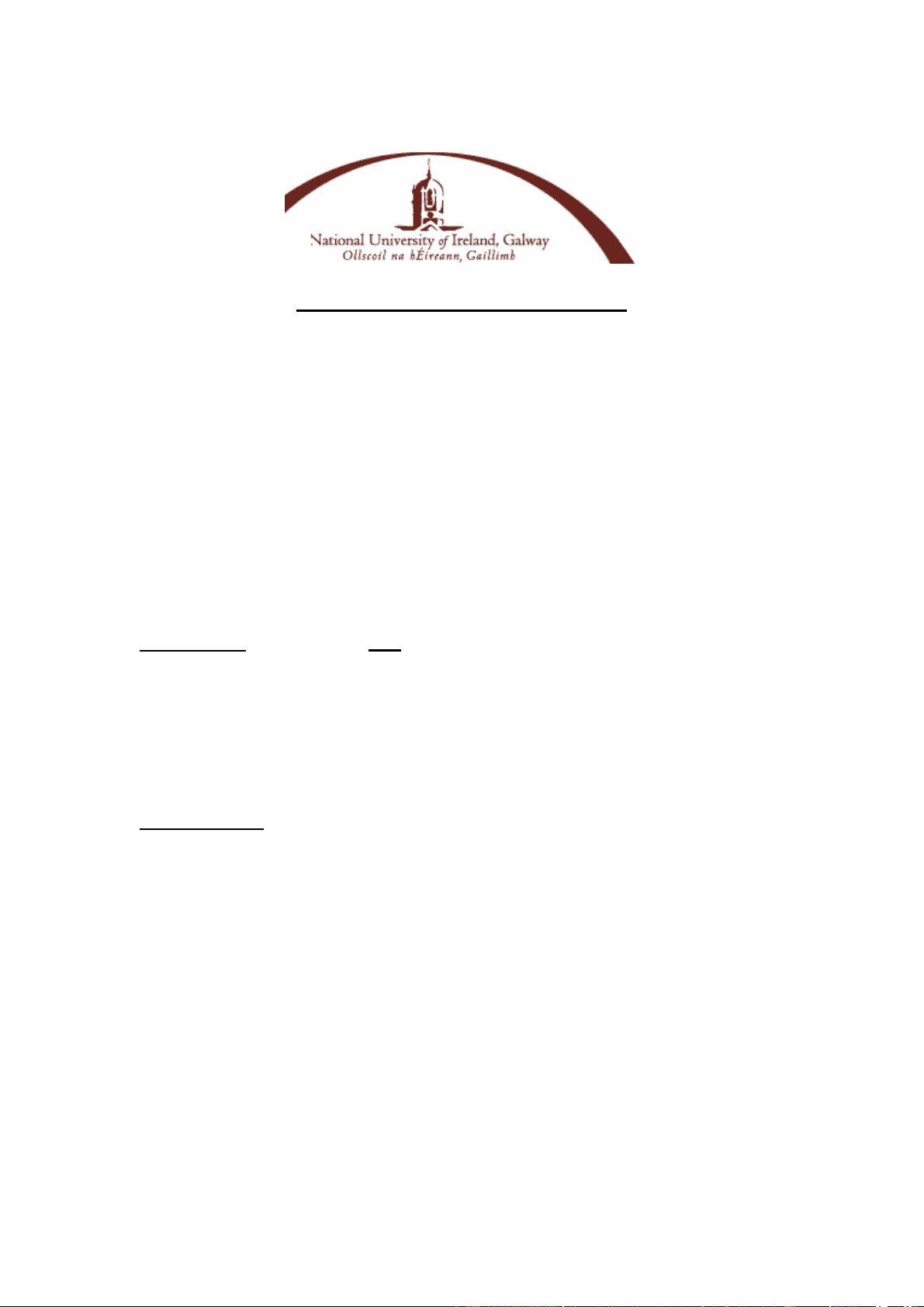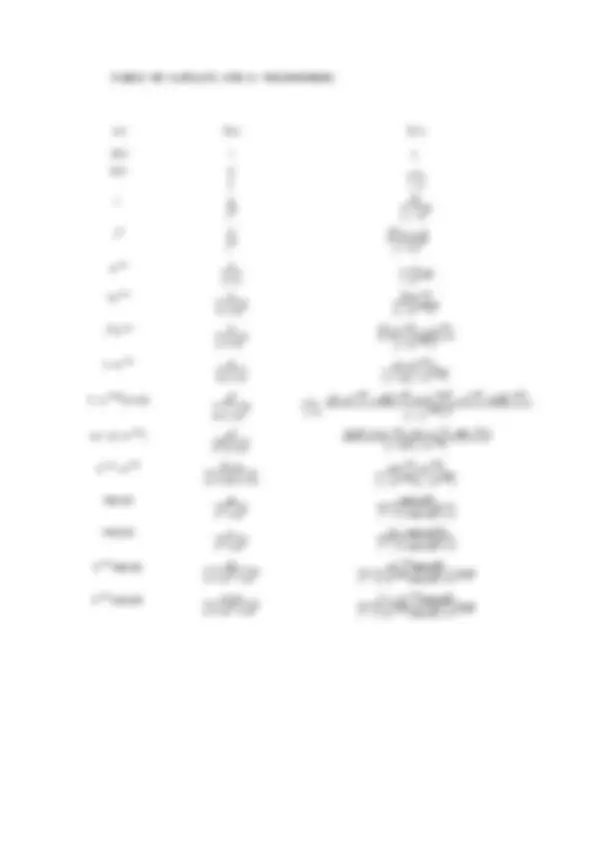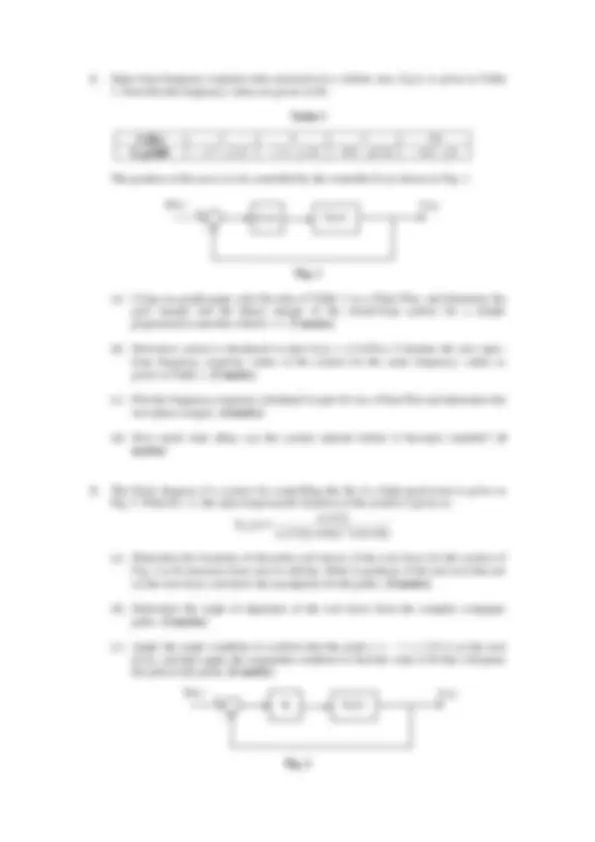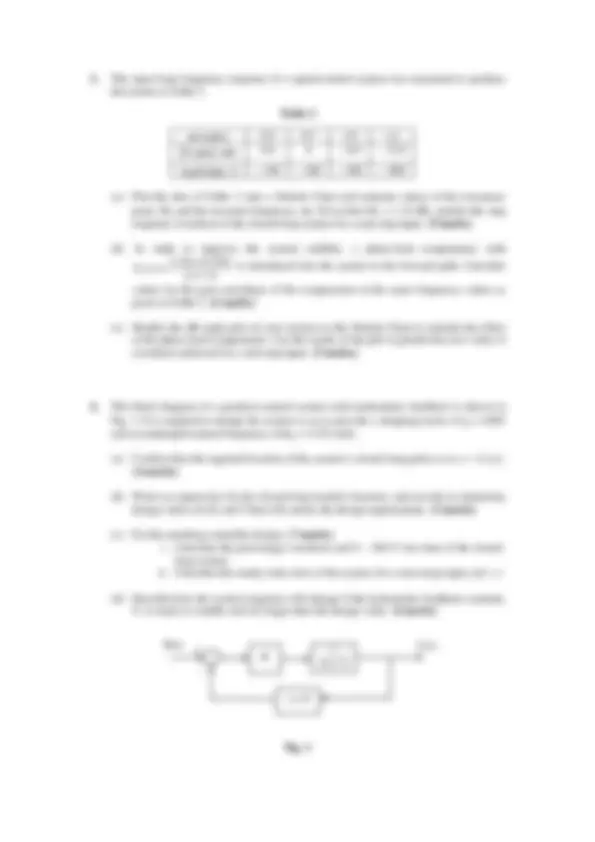





Study with the several resources on Docsity

Earn points by helping other students or get them with a premium plan


Prepare for your exams
Study with the several resources on Docsity

Earn points to download
Earn points by helping other students or get them with a premium plan
Community
Ask the community for help and clear up your study doubts
Discover the best universities in your country according to Docsity users
Free resources
Download our free guides on studying techniques, anxiety management strategies, and thesis advice from Docsity tutors
Information about a spring examinations for the module linear control systems in the electronic engineering department. It includes details about the exam code, modules covered, exam duration, instructions, and required materials. It also provides formulas and rules for calculating various control system parameters.
Typology: Exams
1 / 7

This page cannot be seen from the preview
Don't miss anything!




The following standard formulas are given and may be freely used :
Mp M (^) o
2 ζ 1 −ζ (^2) ( ζ ≤ 0. 707)
ω (^) b =ω (^) n (1 − 2 ζ 2 ) + (1 − 2 ζ 2 ) + 1
T (^) r (0 − 100%) =
Overshoot = 100 exp − πζ 1 −ζ 2
( ζ < 1)
T (^) s (±2%) ≤
ζ ω (^) n ln
1 −ζ 2
⎭⎪^ ( ζ < 1)
T (^) s (±5%) ≤
ζ ω (^) n ln
1 −ζ 2
⎭⎪^ ( ζ < 1)
Ziegler-Nichols Rules : Proportional : K = 0.5 Kc P+I control : K = 0.45 Kc , Ti = 0.83 T (^) c PID : K = 0.6 Kc , T (^) i = 0.5 T (^) c , T (^) d = 0.125 Tc
(s 1 )(s 4 )(s 4 s 8 )
(s 2 ) G (^) p (s) 2
=
G (jω ) (dB) 6.0^0 – 6.0^ – 12.
(s 1. 5 )
s(s 2 )
1 + sT